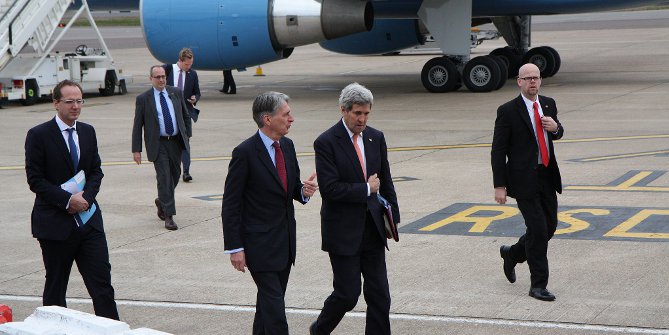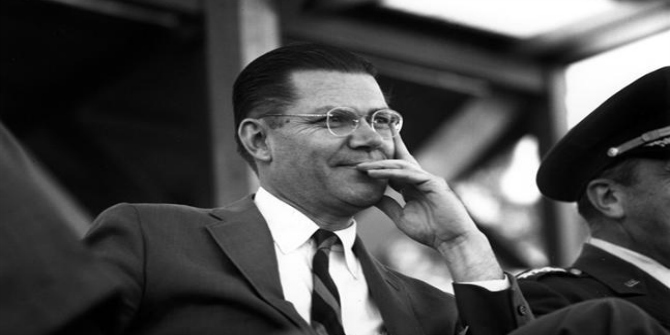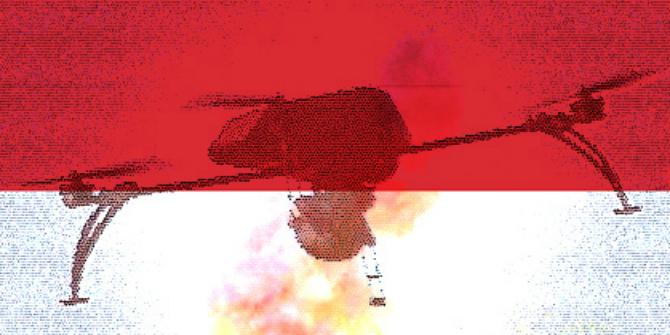 By their nature military conflicts produce veterans, but all veterans do not have the same experiences when they come home; World War II veterans generally prospered after 1945, while Vietnam Veterans have often been viewed as being ‘damaged goods’. In new research, Alair MacLean examines the socioeconomic status of groups of veterans, finding that veterans of World War II and Korea benefited from the country’s growing postwar economy which included government benefits, whereas those returning from Vietnam in the 1970s received far less generous benefits, earned less, and were relatively less equal by comparison.
By their nature military conflicts produce veterans, but all veterans do not have the same experiences when they come home; World War II veterans generally prospered after 1945, while Vietnam Veterans have often been viewed as being ‘damaged goods’. In new research, Alair MacLean examines the socioeconomic status of groups of veterans, finding that veterans of World War II and Korea benefited from the country’s growing postwar economy which included government benefits, whereas those returning from Vietnam in the 1970s received far less generous benefits, earned less, and were relatively less equal by comparison.
When Americans think of veterans of the armed forces, they tend to visualize different men depending on the era of military service. One of the starkest contrasts in the popular imagination is between men who served in World War II and those who went to Vietnam. World War II veterans have long been seen as heroes, called the “Greatest Generation.” They have also been viewed as conformists participating in the post-war bureaucracy, exemplified by The Man in the Gray Flannel Suit.
By contrast, Vietnam veterans have long been viewed as damaged goods. According to this narrative, they most likely were wounded physically by their service, like the protagonists of the movies Coming Home or Born on the Fourth of July. Perhaps even more commonly, they are assumed to be scarred psychologically, like the men returning from war in The Deer Hunter, who play Russian roulette as a sign of their alienation.
Do these different cultural representations reflect something fundamental about how the position of veterans changed over time? According to recent research I conducted with Meredith Kleykamp, veterans did benefit from higher earnings, as well as lower inequality, if they served during the World War II era, and, to some extent the decade immediately after that war. They began to suffer lower earnings if they served in the Vietnam War and the decade following the end of that conflict. While we cannot tease out causal links, our findings suggest that the cultural and socioeconomic positions of veterans were at least somewhat in sync.
There are a number of reasons to believe that the socioeconomic status of veterans should vary over time. The United States drafted service-members between 1941 and 1973, a period that stretches from the beginning of the nation’s involvement in World War II to the withdrawal of troops from Vietnam. During the draft, however, men came to serve in different ways. During World War II, more than half of all men served, and men were only excluded from service if they had health problems, either physical or mental. During the Vietnam War, less than half enlisted, and men were able to evade service by enrolling in higher education. Some have therefore referred to this later war as one dominated by class bias.
After enlisting in these decades, US service-members were exposed to different situations: World War II, the wars in Korea and Vietnam, as well as the decade of peacetime Cold War in between. Nearly a third of those who were wounded during World War II were killed, compared to only one quarter in the later wars in Korea and Vietnam. Thus, men were more likely to die and less likely to come home injured from that earlier than from those later wars.
World War II and Korean era veterans returned to a relatively prosperous and egalitarian nation that treated them well. They came back to the United States of the 1940s and 1950s, which scholars believe may have been anomalous with reference to the low level of economic inequality. It was a period of growth that was spread relatively evenly across the population. Veterans also received governmental benefits that were unprecedented, providing them with money for education and housing.
Veterans received far less generous benefits than their forebears when they came home from Vietnam. They also returned to a society that was in the early stages of the takeoff in inequality that scholars trace in the United States to the 1970s and 80s.
Since the end of the draft, the country has operated a system in which people volunteer to enter the military. For the first thirty years of the volunteer force, service-members had relatively limited involvement in combat. Over the last decade and a half, of course, US troops have been engaged in the conflicts in Afghanistan and Iraq.
Consistent with some of these historical changes, researchers have generally found that veterans earned more than other men if they served in World War II, and less if they served in Vietnam. We wanted to use consistent data over a long time period to test if these differences were robust and statistically significant, as well as what patterns held for veterans of eras that have received less attention. In addition, we wanted to examine a research question that had not previously received any attention. To wit: Do veterans exhibit the same patterns of increased inequality since the 1970s as do other men?
To address these questions, we analyzed data from the Current Population surveys of 1967-2010. We began by observing how average earnings and earnings inequality had changed historically and then how they may have differed across generations. We accessed the data using the Integrated Public Use Microdata Series, or the IPUMS.
Our research confirmed the intuition that veterans occupied a relatively privileged position if they served in World War II and were relatively disadvantaged if they served in the Vietnam era. The veterans of the “Greatest Generation” earned substantially more than comparable non-veterans, and experienced the least inequality. Those of the Vietnam era earned less than non-veterans and were relatively more unequal from each other.
We also found that veterans who served between those two wars, who fought in Korea or served during the peacetime Cold War period of the late 1950s and the early 1960s, were at an advantage relative to men who did not serve, though increasingly less so than the men of the earlier era. In addition, veterans appear to have suffered the biggest disadvantage if they served in the immediate post-Vietnam period, earning substantially less than men who did not serve, and having the largest within group inequality. In the years since the mid-1980s, the gap between veterans and non-veterans seems to have closed, with both types of men having relatively similar levels of earnings and income inequality.
The data do not allow us to definitively identify the causes of these changes. We can, however, speculate. It may be that the military became increasingly unpopular in the United States after World War II, reaching a nadir around the time of the Vietnam War and immediately thereafter. The loss of popularity could lead to more negative outcomes among former soldiers, by shaping both the preservice characteristics of those who enlisted and their experiences after they left the military. As mentioned, men were able to avoid the draft during the Vietnam War by going to college. The armed forces thus drew disproportionately from those who had fewer options when they went in and likely did not improve those chances after they left. Service during World War II was much more common, with men excluded primarily for health problems. Thus, it drew from a large pool of relatively advantaged men. In addition, as mentioned, veterans returned home to different societies both culturally and economically.
What does this mean for the contemporary era, when more than a million veterans have returned from the wars in Iraq and Afghanistan? It is too early to tell definitively. These veterans have come home to an environment that resembles in some ways that to which the World War II veterans returned, but also differs in important ways. Like those earlier veterans, they are eligible to receive more generous educational funding than those returning in the intervening decades. They also return to a society that appears to be more welcoming to previous service-members than at any time since the 1940s. Yet, they were a third less likely to die if they were wounded, meaning that they are more likely today to return with injuries. They must reintegrate into a radically different economy. Unlike the veterans of that previous era, they face extremely high levels of inequality. Many returned during the years of the Great Recession that began in 2008. They represent a much smaller share of the population than did the men who served during the forties, fifties, and sixties, who were part of a mass mobilization. Their socioeconomic fate remains to be seen.
Featured image credit: Leo Reynolds (Flickr, CC-BY-NC-SA-2.0)
Please read our comments policy before commenting.
Note: This article gives the views of the author, and not the position of USAPP – American Politics and Policy, nor the London School of Economics.
Shortened URL for this post: http://bit.ly/1piCYFd
_________________________________
 Alair MacLean – Washington State University
Alair MacLean – Washington State University
Alair MacLean is an Associate Professor of Sociology at Washington State University. Her research and teaching focus on inequality and the life course. Her current research focuses on veterans who served between World War II and the contemporary wars in Iraq and Afghanistan.







As a Vietnam era veteran (US Navy ’68-’75), I’d like to thank you for doing this research.
Paul, thank you for your service to our country.